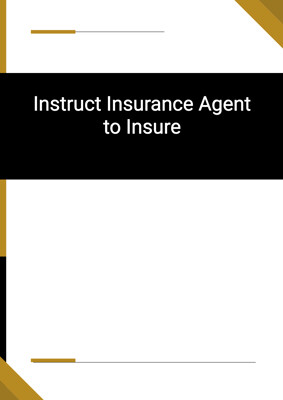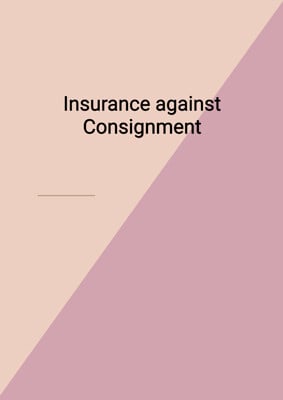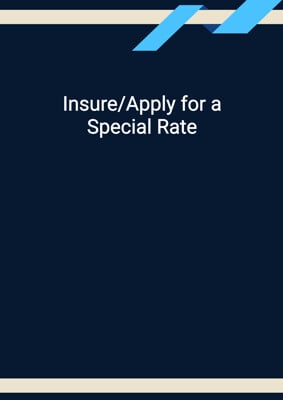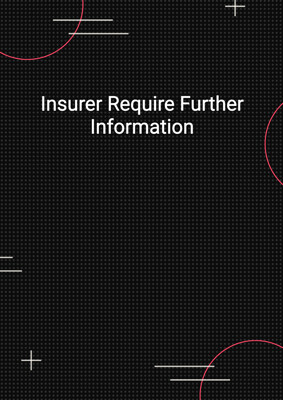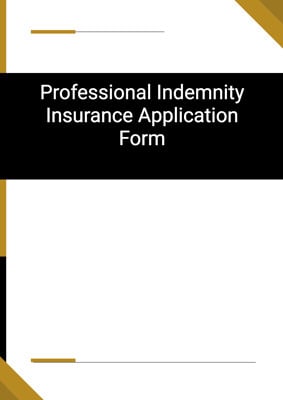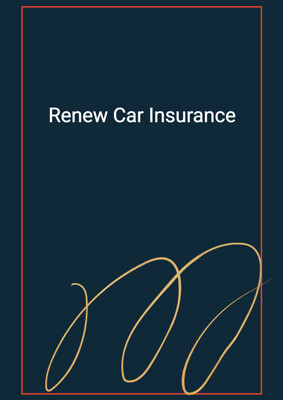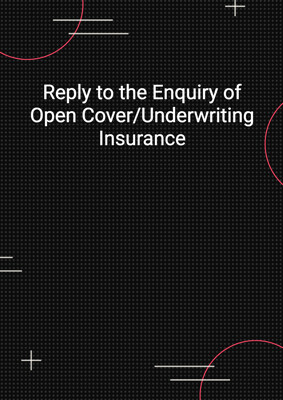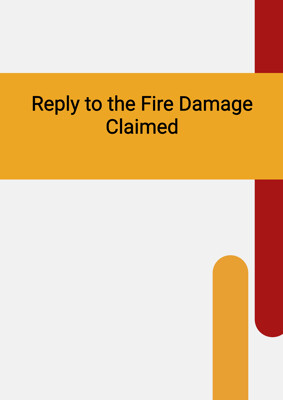
Insurance against Loss of Cash
Enquiry of Insurance Rate
This document can be used as a template for enquiry of an insurance rate against the loss of cash. It sets out the insurance coverage, including the risks of loss of money due to fire, theft, and the accident to staff while they are engaged in the money takings.
How to Tailor the Document for Your Need?
01
Create Document
Click "Create Document" button and the document will be prepared with your account details automatically filled in.
02
Fill Information
Please fill in any additional information by following the step-by-step guide on the left hand side of the preview document and click the "Next" button.
03
Get Document
When you are done, click the "Get Document" button and you can download the document in Word or PDF format.
04
Review Document
Please review the document carefully and make any final modifications to ensure that the details are correct before sending to the addressee.
Document Preview
Document Description
The document titled 'Insurance against Loss of Cash' is a formal letter requesting insurance coverage for potential risks related to cash handling. The document starts with a brief introduction, mentioning the importance of insuring cash due to the significant amounts involved, especially during weekends. The letter is addressed to the recipient, who is expected to provide insurance coverage.
The document consists of several sections, each serving a specific purpose. The first section includes the account holder's personal information, such as their first name, last name, job title, and company. This information helps identify the sender of the letter and establish their credibility.
The second section mentions the current date, which indicates the timeliness of the request. This ensures that the recipient understands the urgency of the matter and can respond promptly.
The main body of the document begins with a formal salutation, addressing the recipient as 'dear sir/madam.' This sets the tone for a professional and respectful communication.
The next paragraph provides background information about the sender's cash handling practices. It states that the sender deposits their daily takings into the bank each morning, emphasizing that the sums involved can be substantial, especially on weekends. This information highlights the need for insurance coverage to protect against potential losses.
The following paragraph specifies the bank with which the sender has an account and its address. This information is crucial for the insurance provider to understand the location of the premises and the transit route to the bank.
The subsequent section outlines the specific risks for which the sender seeks insurance coverage. It lists three main categories: 1) loss of cash on the premises due to fire, theft, or burglary, 2) loss of cash in transit between the premises and the bank, and 3) accidents or injuries to staff while handling money during transit. By clearly stating these risks, the sender ensures that the insurance provider understands the scope of coverage required.
The final paragraph concludes the letter by requesting the recipient to provide details of the insurance terms and conditions. The sender expresses their willingness to consider the terms offered by the recipient and signs off the letter with a formal closing and their name.
In summary, the document 'Insurance against Loss of Cash' is a formal letter requesting insurance coverage for cash-related risks. It provides detailed information about the sender, their cash handling practices, and the specific risks they want to insure against. The letter is structured in a professional manner, ensuring clarity and conciseness throughout.
How to use this document?
To effectively use the document 'Insurance against Loss of Cash,' follow the steps below:
1. Fill in the account holder's personal information: Enter the first name, last name, job title, and company of the account holder in the designated fields. This information helps identify the sender and establish their credibility.
2. Specify the current date: Replace 'current date' with the actual date when filling out the document. This ensures that the letter is up-to-date and reflects the timeliness of the request.
3. Address the recipient: Replace 'dear sir/madam' with the appropriate salutation based on the recipient's gender or title. This personalizes the communication and shows respect.
4. Provide background information: Briefly describe your cash handling practices, including the frequency of bank deposits and the significant amounts involved, especially on weekends. This helps the insurance provider understand the importance of coverage.
5. Specify the bank details: Replace 'address' with the actual address of the bank where you hold an account. This information is crucial for the insurance provider to assess the location and transit route.
6. Outline the risks: Clearly state the risks you want to insure against, including loss of cash on the premises, loss of cash in transit, and accidents or injuries to staff during transit. This ensures that the insurance provider understands the scope of coverage required.
7. Request insurance terms: Politely ask the recipient to provide details of the insurance terms and conditions they can offer. Express your willingness to consider their terms and await their response.
By following these steps, you can effectively use the document 'Insurance against Loss of Cash' to request insurance coverage for cash-related risks. Remember to review the completed document for accuracy and clarity before submitting it to the insurance provider.
Not the right document?
Don’t worry, we have thousands of documents for you to choose from:











